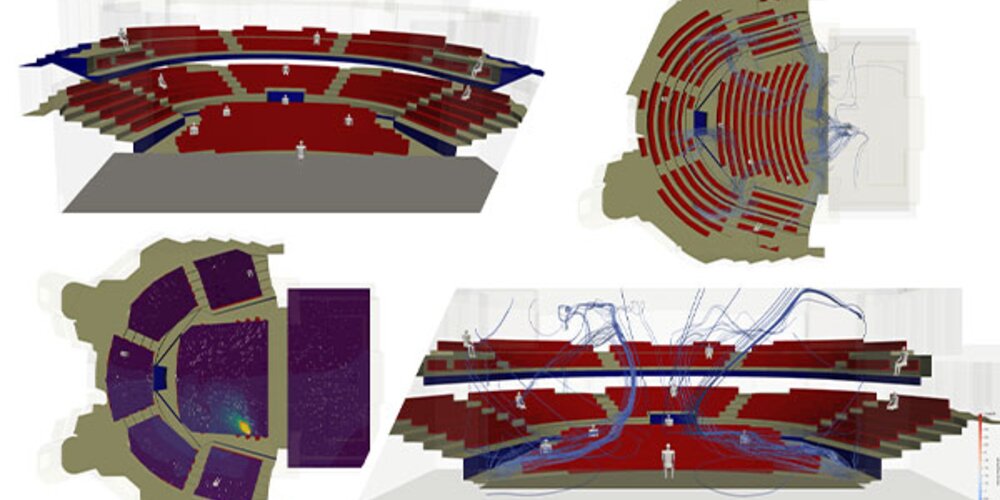Browse our services
Explore how Brookes Bell can help you
Find an expert
Meet our team, find and expert and connect
Contact us
Get in touch, we're here to help

The world continues to grapple with the challenges posed by COVID-19 but as vaccine rollouts gather pace, the cruise industry is keen to fully resume operations, while doing everything it can to ensure the health and safety of its passengers and crew.
Nick Doherty, Senior Mechanical Engineer, has been using computational fluid dynamics (CFD) to examine the potential for COVID transmission in indoor spaces for a leading cruise owner.
Nick explains: “The client, a cruise ship owner, wanted to ensure that passenger safety was maximised in terms of COVID transmission. There is significant research demonstrating the airborne transmission of COVID and so our attention was focussed on the indoor public spaces where large numbers of cruise passengers would typically gather, such as the theatre spaces and dining areas.
“Our goal was to quantify and assess the risk and then to recommend mitigation measures. The client particularly wanted to understand how the air would circulate around the theatre, from the inlets of the HVAC system to the outlets.”
The HVAC system is comprised of air handling units and fan coil units for the return air, and so Nick needed to have a clear understating of the effect of the return air on COVID transmission and the impact of different filter types in the fan coil units, to mitigate any possible effects.
He built a CFD model of the theatre space, recreating the complete geometry of the space and the HVAC system, with 11 persons in the theatre space - 10 passengers seated in various areas of the theatre, and one performer on the theatre stage - who were potential sources of contamination.
The particle emission from each agent was modelled for particles in the aerosol size range (<3µm) with particle shedding rates correlating with the most recent research findings. Filters in the HVAC system were modelled to stated efficiencies of particle arrestence efficiency with particle size. The air flow around the theatre space, with the HVAC system fully operational, was examined over a period of 2 hours (the maximum duration of a show in the theatre) so that the potential spread of COVID through aerosol transmission could be accurately modelled both from the primary source (passengers sitting in theatre space) and the secondary source (return air from HVAC system).
The criteria for the risk of infection were based on the latest research on the subject, which is founded on a cumulative number of particles inhaled over time. With the CFD model, this could be assessed qualitatively and quantitatively at any point in the theatre space.
Based on the results of the CFD solutions, Nick concluded that the most significant risk of COVID transmission came from the primary source, i.e. the breath of the contaminated passenger. The potential secondary source of contamination, through the return air of the HVAC system, was seen to be significantly less of a risk, with little risk of covid transmission during the time frame analysed.
Following the comprehensive analysis, modelling and assessment of the findings, Nick presented a range of various measures which could be implemented to help reduce the risk of covid transmission. These included the positioning of the HVAC inlets and outlets in the theatre space, local air filtration units, the wearing of masks by passengers and increased fresh air supply. Being able to share the visual representation of the risk provided by the CFD model allowed the client to gain a clear understanding of the various risk factors.
Nick concludes that: “COVID transmission is clearly a very important subject at present. The application of CFD modelling in a scenario like this provides a cost-effective and accurate assessment of the risks for specific spaces and use profiles, where the risks can be clearly identified both qualitatively and quantitatively to give a clear understanding of the chances of transmission.
“Once the risks are clearly understood, any decisions on the measures required to reduce risk and increase the safety of the space will be better informed. The effect of such mitigation measures can also then be analysed with CFD to be clearly understood and quantified.”